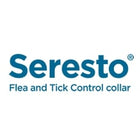
Introduction
Thyroid problems are common in older cats and can significantly affect their health if left untreated. The most common thyroid condition in cats is hyperthyroidism, a disorder caused by an overproduction of thyroid hormones. Recognizing the signs, underlying causes, and available treatments is essential for prompt diagnosis and effective care.
This blog will cover everything you need to know about feline thyroid disease and how to keep your cat healthy and comfortable.
What is Thyroid Disease in Cats?
Cats have two thyroid glands in their necks. These glands release hormones responsible for controlling your cat’s metabolic functions, heart rate, body temperature, and more. When the glands become overactive, they produce too much thyroid hormone (T4), leading to hyperthyroidism.
Hypothyroidism, which is when the thyroid doesn’t produce enough hormones, is very rare in cats and is usually seen in kittens or as a side effect of the overtreatment of hyperthyroidism.
Common Symptoms of Hyperthyroidism in Cats
Hyperthyroidism can show up in various ways, and the signs often develop gradually. Common symptoms include:
- Weight loss despite increased appetite
- Excessive thirst and urination
- Hyperactivity or restlessness
- Vomiting or diarrhea
- Poor coat condition or matted fur
- Increased heart rate
- Enlarged thyroid gland (a lump in the neck)
If your cat is showing these symptoms, it’s important to consult your veterinarian for testing and diagnosis.
Causes of Feline Hyperthyroidism
While the exact cause isn’t always clear, some known factors contribute to hyperthyroidism in cats:
- Benign thyroid tumors (adenomas): These non-cancerous growths are the most common cause.
- Dietary factors: High levels of iodine or certain commercial cat foods have been suspected but not confirmed.
- Environmental toxins: Long-term exposure to flame retardants and chemicals in the home may play a role.
Most affected cats are middle-aged or older, typically over 10.
Diagnosis of Thyroid Problems in Cats
Your veterinarian will perform a physical examination and may feel for an enlarged thyroid gland. Blood tests measuring thyroid hormone (T4) levels are the most common method for diagnosis. In some cases, additional tests such as free T4 or imaging like a thyroid scan may be recommended to confirm the condition.
Treatment Options for Hyperthyroidism in Cats
There are several effective treatments available for feline hyperthyroidism:
Medication
Oral or transdermal (applied to the skin) medications like methimazole are commonly used to control thyroid hormone levels. This is a noninvasive option, but it requires daily dosing and regular blood tests.
Radioactive Iodine Therapy (I-131)
This one-time treatment involves injecting a radioactive iodine compound that destroys abnormal thyroid tissue. It’s highly effective and often cures the disease, but is only available at specialized facilities.
Surgery
Removal of the affected thyroid gland (thyroidectomy) is another option. It can be curative, but surgery carries some risks, especially for older cats or those with other health issues.
Prescription Diets
Special low-iodine diets are available that help manage the condition by limiting the thyroid’s ability to produce hormones. These must be fed exclusively for effectiveness.
Can Hyperthyroidism Be Cured?
In many cases, yes. Treatments like radioactive iodine therapy or surgery can permanently resolve the issue. However, lifelong medication management is also a safe and effective option for cats that aren’t good candidates for other treatments.
Complications if Left Untreated
If left unmanaged, hyperthyroidism in cats can result in severe health issues, such as:
- High blood pressure (hypertension)
- Heart disease (especially thickened heart walls)
- Weight loss and muscle wasting
- Increased risk of kidney damage
Early detection and proper treatment can greatly enhance your cat’s well-being and lifespan.
How to Support a Cat with Thyroid Disease
Here are some tips for pet parents:
- Schedule regular check-ups and blood tests
- Monitor your cat’s appetite, weight, and behavior
- Follow medication and dietary guidelines strictly
- Keep your cat hydrated and stress-free
- Ask your vet about possible side effects or treatment adjustments
Conclusion
Feline thyroid disease, especially hyperthyroidism, is a manageable condition when caught early. Your cat can enjoy a vibrant, comfortable, and fulfilling life with the right treatment plan and veterinary support. If your cat is over 10, include thyroid checks in their regular health screenings.






